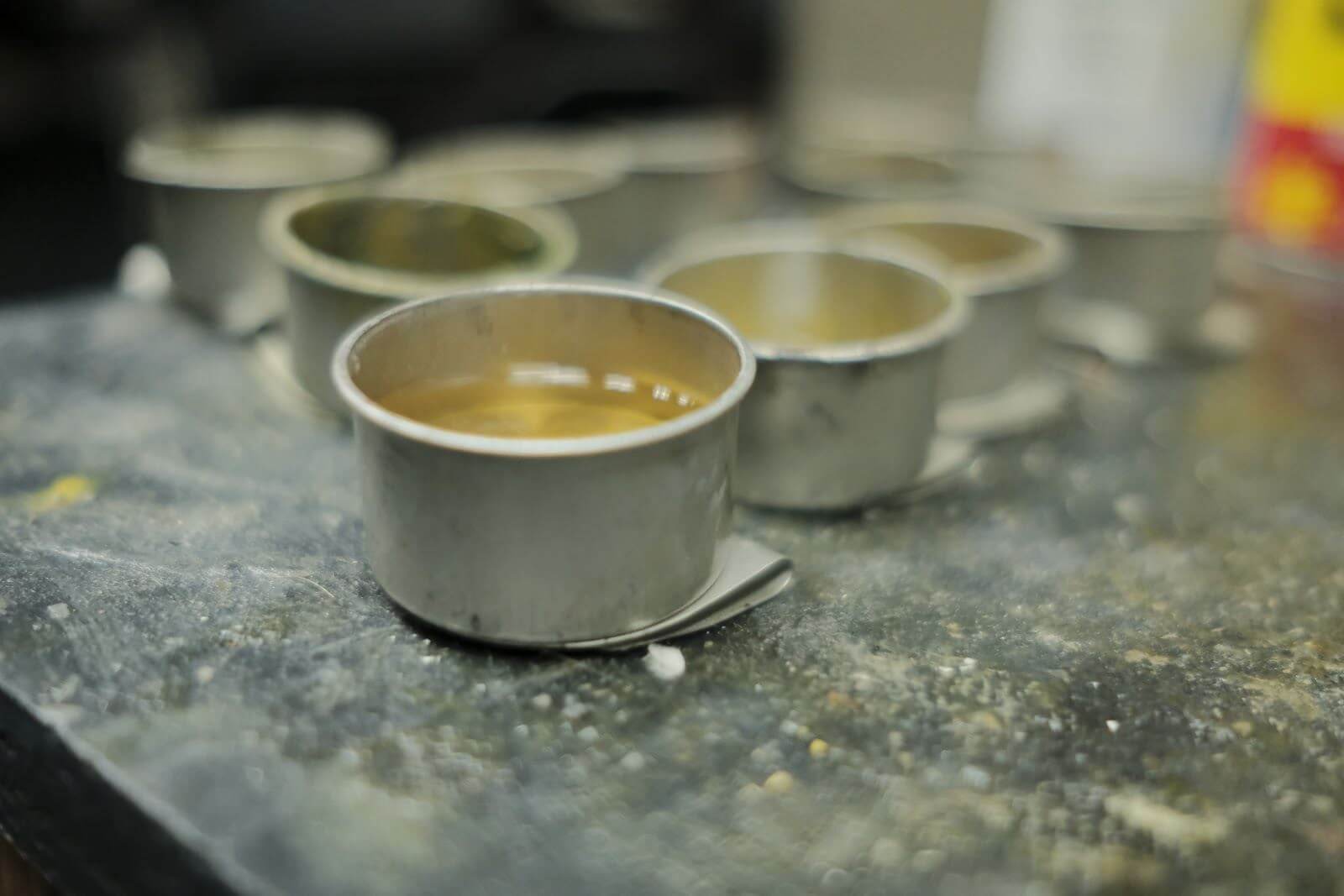
Cups of linseed oil and alkyd lined up at the Hillsborough Art Academy.
More...
Maybe you just recently started oil painting or you have been at it for a while, but you have most likely heard teachers or other artists talk about oil painting mediums. What is it and do you need a medium for oil painting?
A medium is a vehicle that’s used to thin the paint and change the drying process. Different types of mediums impart different qualities, some dry paint quicker some make it stay wet longer.
All oil paint has some form of medium in it already. Oil binds paint pigment together, as the pigment is just a dry powder. It’s simply color and then paint manufacturers add oil to it. Most paints these days are made with either safflower oil or linseed oil.
So with that in mind, let’s discuss several different types of oil painting mediums and why a painter might choose to use them.
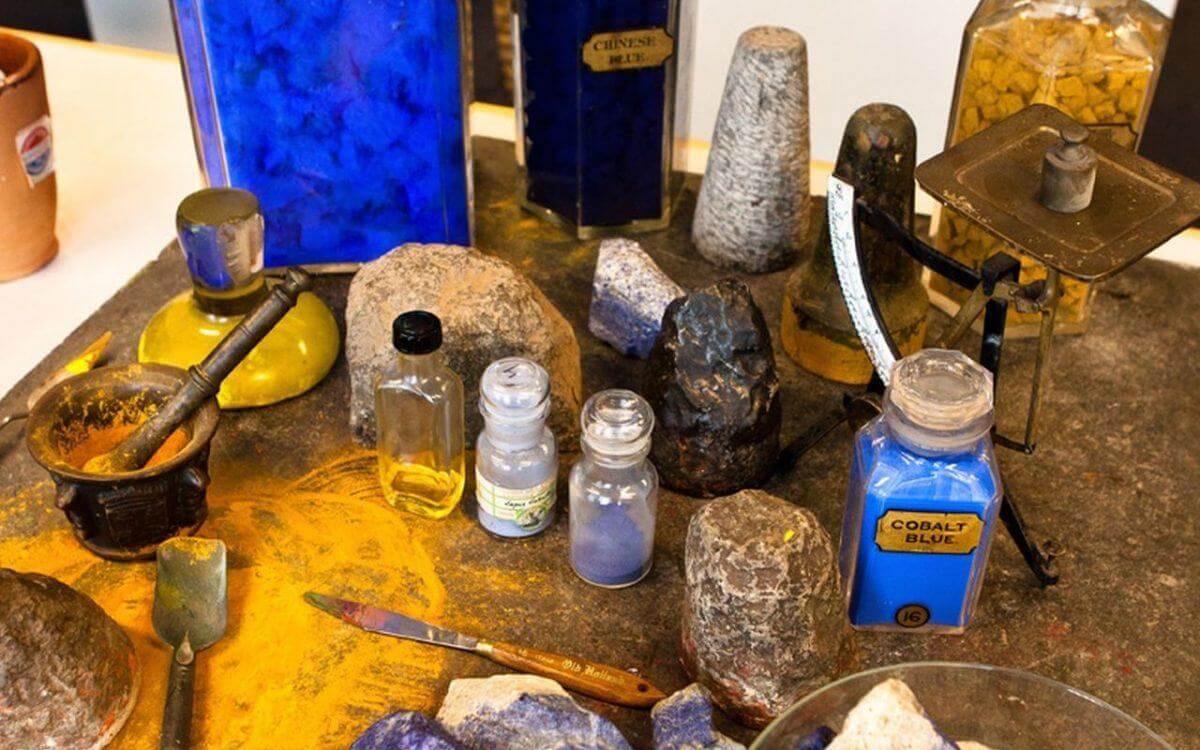
A display of how painters used to mix their own pigments with linseed oil. Credit: Old Holland Museum
Do You Need a Medium for Oil Painting?
Generally speaking, paint is in its finest condition the way it comes out of the tube. Quality paint manufacturers like Old Holland don’t make a product designed to be degraded with more medium. If more oil was required for the paint, they would put more oil in the paint.
So the higher the grade of paint the less oil you will have in it. If you open up a tube of paint and oil spills out of it, chances are you dealing with a lower grade material. So you can assess the quality of paint based on the amount of oil that’s in the paint because paint pigments are a lot more expensive than oil binders.
If you are working with high-quality paint, you don’t need to add oil painting mediums. But you may want to affect the density, drying time, or characteristics of the paint, and for that, you can use a medium. So if if you've asked, 'do you need a medium for oil painting', you'll want to make sure to keep reading on.
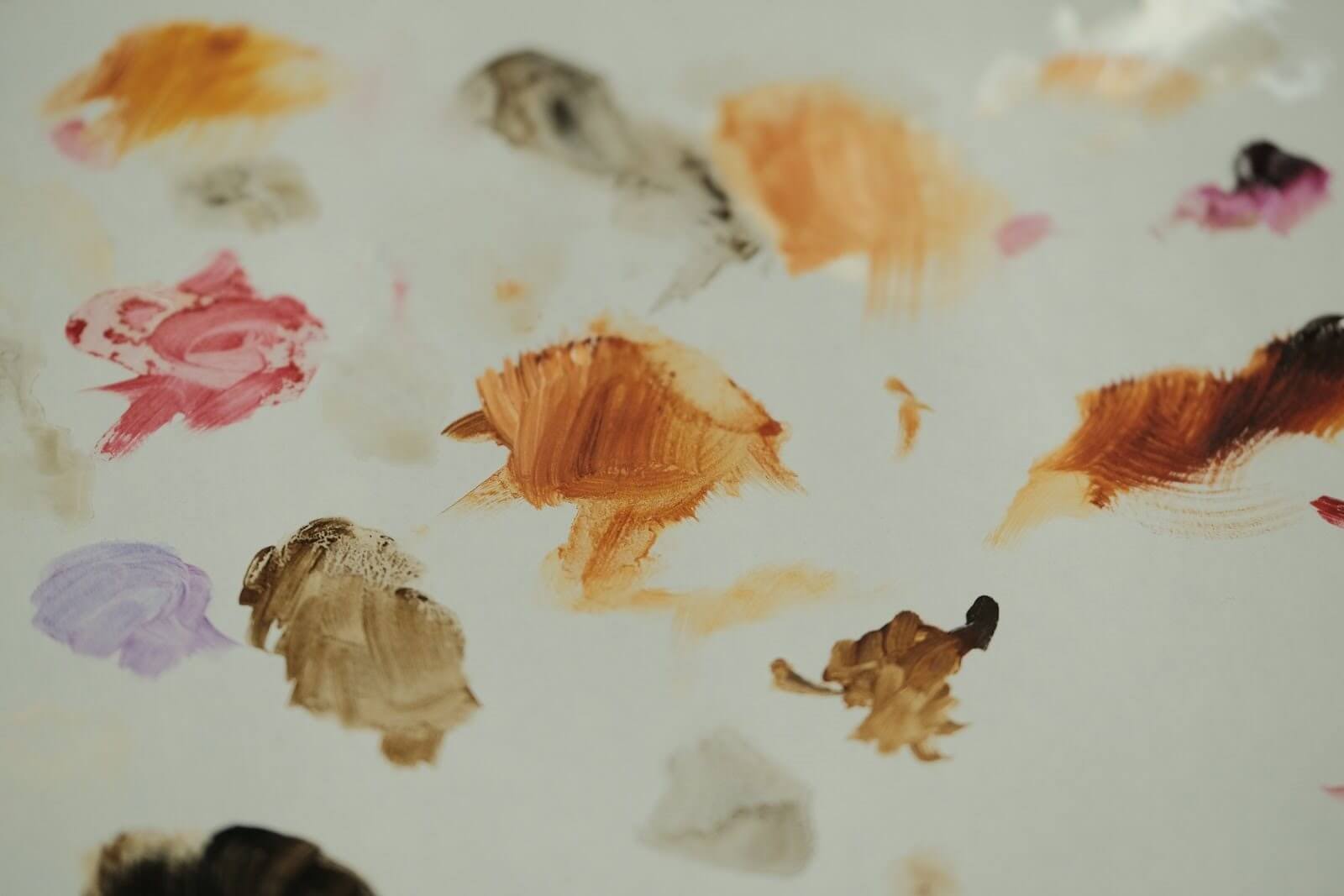
Medium can thin down opaque paint or increase the fluidity of glaze.
Choosing a Medium requires Intention
When Evolve students are taught to paint, they add extra linseed oil to the paint to thin it. This also slows down the drying process a little, but the big thing is the thinning of the paint to create a smooth, even finish.
When do you need a medium for oil painting? The general rule of thumb is you don’t want to thin the paint unless it’s your intent. You don’t want to add medium to a point where the paint is no longer opaque or solid. Rather, you want a stable paint film that you can easily move about on your canvas.
This means that you never want more than 50% of your mixture to be oil. Ideally, you will have much less than half, just a little bit of oil, because the paint as it comes out of the tube is in its most pristine condition.
Do you need a medium for oil painting? The simple answer: you should use a medium only if necessary and if it works with your intentions for the painting. If you are using quality paints medium is not necessary most of the time. But if you require paint to dry quickly, slowly, or be a bit thinner, the medium is a good choice.

Kevin used medium to speed drying and increase opacity in this painting.
Alkyd Medium
In general, people want their oil paint to dry faster and for that, they may use an alkyd as an oil painting medium. Alkyd is a chemical that has some solvent in it. One recognizable solvent is turpentine, which breaks down binders in the paint, drying them at a faster rate.
Alkyd will dry a painting overnight unless the paint is very thick. Generally, it will dry paintings within 24 hours that you can work layer on top of layer for several days in a row. This is beneficial for quick turnarounds in paintings and techniques like speed painting where it is necessary to paint in thin layers.
Here at Evolve, we always mix alkyd into linseed oil. And the reason is that alkyd by itself will start to dry up the paint very quickly. So if you sit down to work in a three-hour window, the paint will begin to stiffen up. While there are times this may be desirable, often mixing linseed oil into alkyd produces the most workable paint drying time.
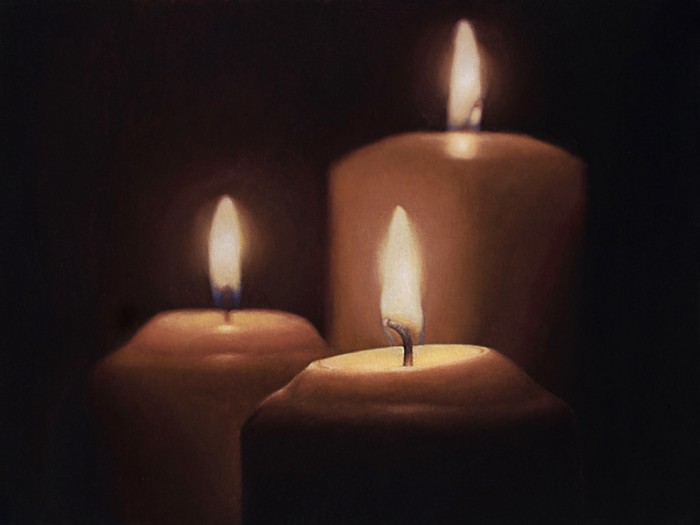
Kevin used medium to speed drying and increase opacity in this painting.
Alkyd Used As An Isolating Layer
Once a painting is dried, it can be sealed with alkyd. Once the alkyd layer is dry, the artist can go on to paint with opaque or glaze paints, sealing again when it is necessary to lock in the layers below.
Linseed Oil as an Oil Painting Medium
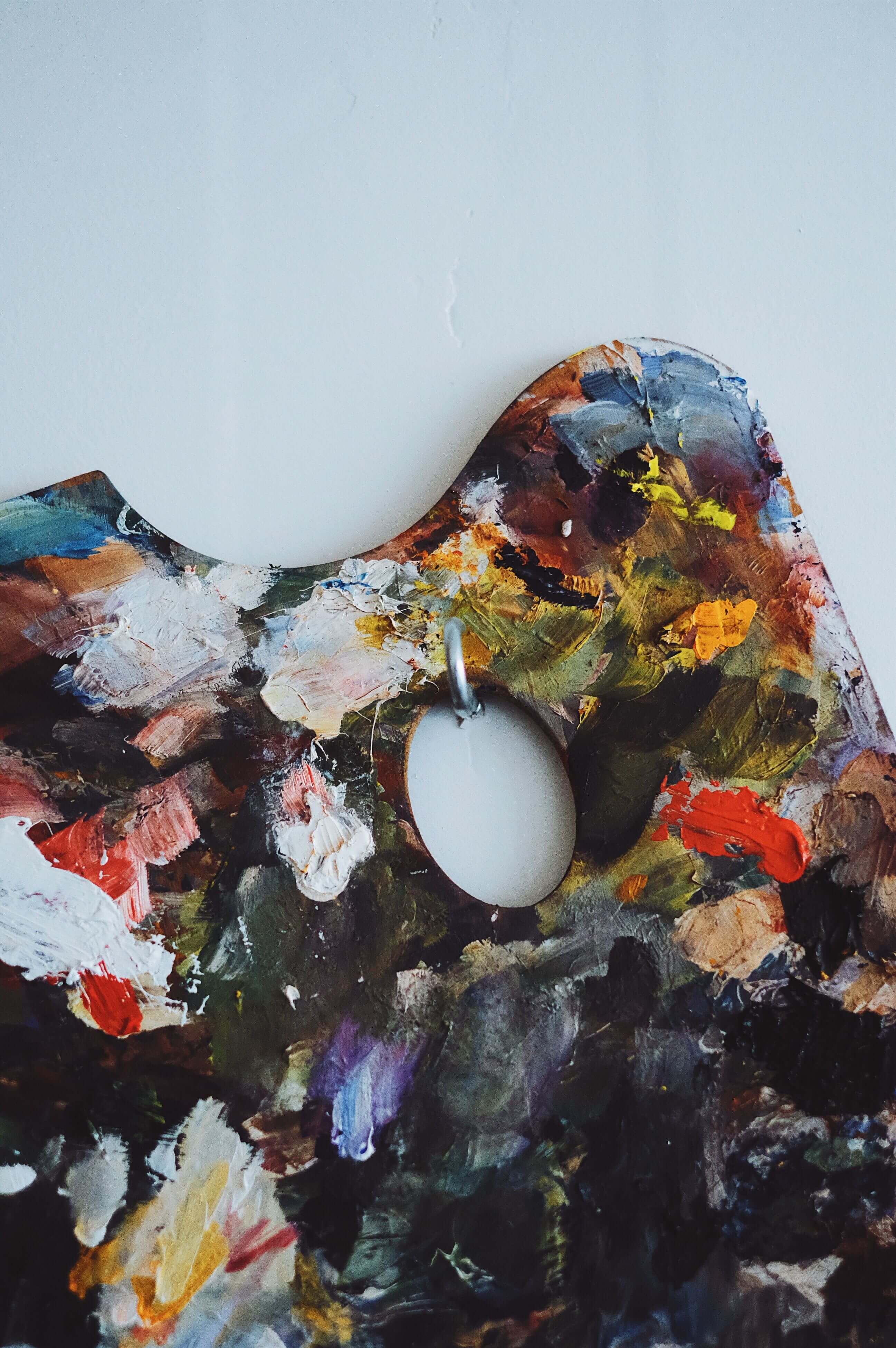
A paint palette can be preserved for many days with clove oil. Photo by Dan Cook
When mixed with paint it slows down the drying process so that over a long day of working your paint will remain pliable and not begin to dry or become sticky. However, it will often take longer than 24 hours to dry if used alone.
At Evolve, we recommend and use linseed oil with alkyd, generally in four-part linseed oil to one part alkyd ratio. What that does is give painters a medium that stays workable for several hours, but will still dry overnight. After four or so hours the paint will begin to stiffen slightly, but it is still very workable and pliable and will be dry for work the next day.
Clove Oil as an Oil Painting Medium
On the other end of the spectrum, if you want the paint to stay wet longer, you would use clove oil. Clove oil is not technically an artist material, it’s actually an essential oil and is available at certain markets or pharmacies. Clove oil is usually used for two things: cooking and toothaches.
However, if you take clove oil and add it to your paint it will keep your painting wet for days. Only a few drops mixed with linseed oil, and you will have a palette that remains wet for a few days.
Clove oil can be a very helpful tool for artists, particularly when working on large pieces or artists who may need to extend their palette to stay wet for several days.
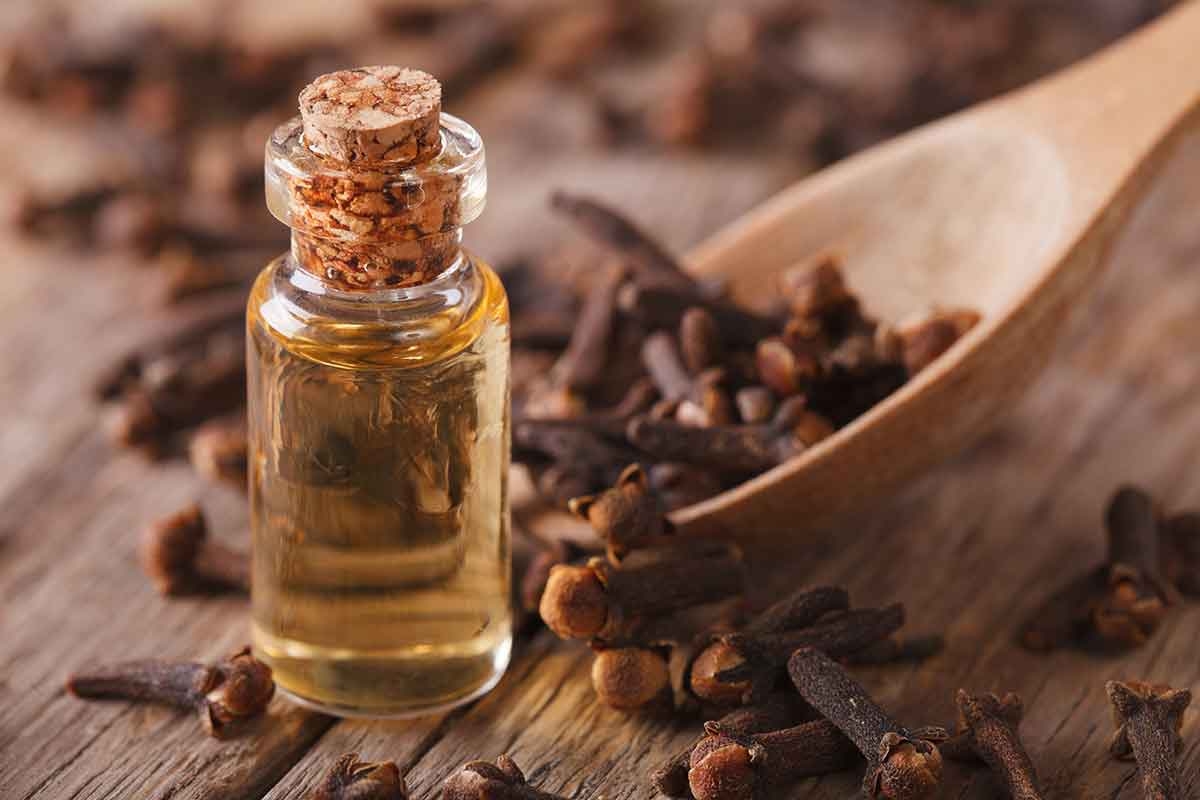
Clove oil can extend the life of your oil paint. Photo by Natural Pigments
Final Thoughts: Is a Medium for Oil Painting Necessary?
Different mediums are used for different purposes. This is crucial when deciding the medium you wish to add to your paint.
So, do you need a medium for oil painting? If your intent is to extend drying time, then consider linseed oil or clove oil. But if you wish to have your paint dry very quickly a combination of linseed oil and alkyd or pure alkyd will be helpful.
Your intent is always important to consider as you choose a medium, and keep in mind that paint in its purest form, out of the tube, is often all you need.
FREE MASTERCLASS:
The 4 Part Framework to Develop Artistic Excellence in 12 Months
